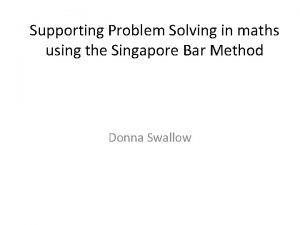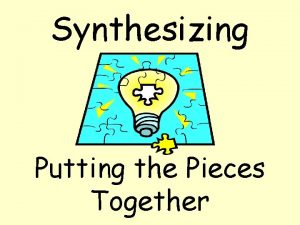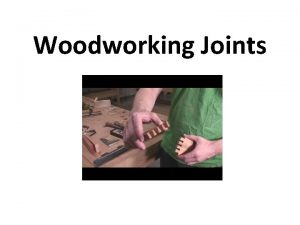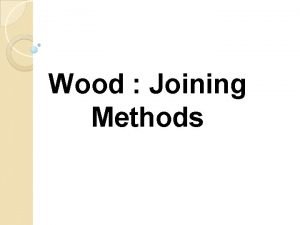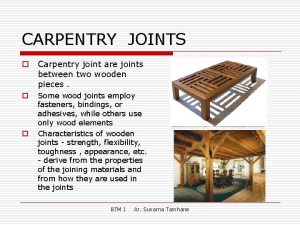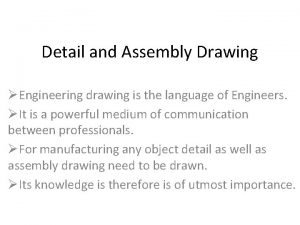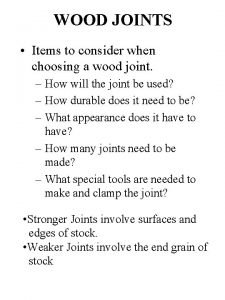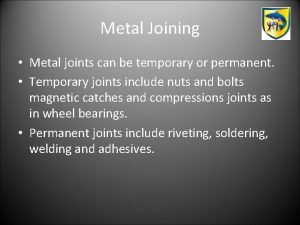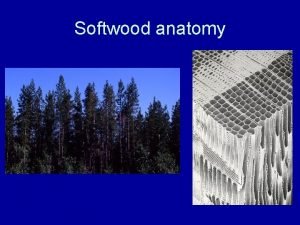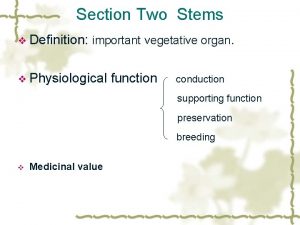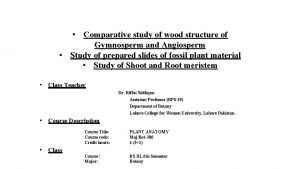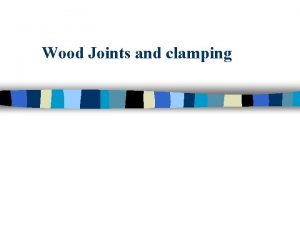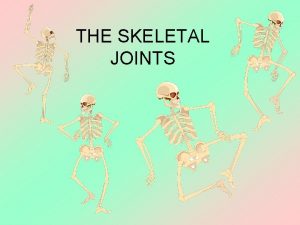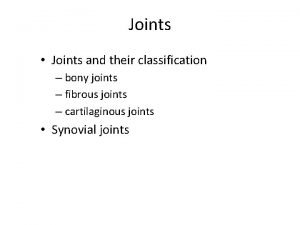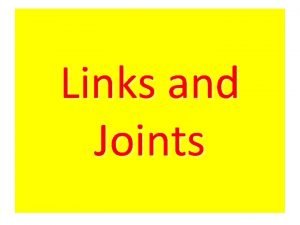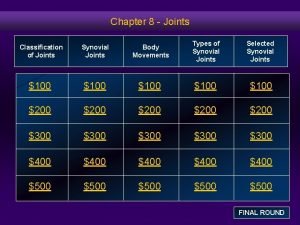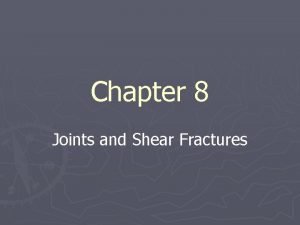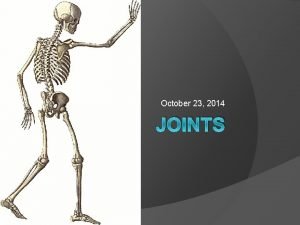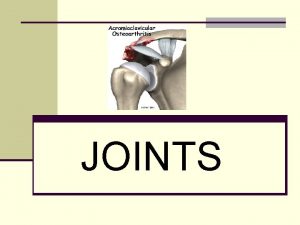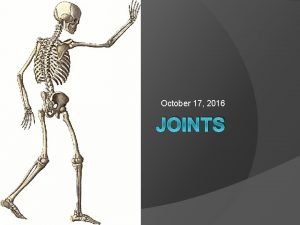Joints Joints Connects two pieces of wood together












- Slides: 12

Joints

Joints ● Connects two pieces of wood together in a structure ○ More than one joint can be at a single location ● Adds additional structural integrity ● Allows one to disperse the forces from the top into different structural beams in the structure ● Main three joints: ○ ○ ○ End Joint Lap Joint Gusset Joint

End Joint ● Weakest joint ○ ○ Small surface area Grain structure of tip is non ideal for structures ○ Easy to pull off ■ Contact can be weak/not flush ■ Grain does create optimum contact Compression increase forces ■ Increase friction between wood parts Pushes opposite members away from each other ● Connecting end of wood piece to the side of a wood piece to create a flat T shape ● Requires sanding to create flush contact ● Best used under compression ○ ○

Lap Joint ● Stronger Joint ○ ○ Better grain structure with grains running perpendicular to one another Larger contact area when using side of wood piece. ● Connects side of an end piece of wood to attach to the side of a piece of wood creating a elevated piece ● Great for pieces under tension ○ ○ Perpendicular grains allow for better contacts Prevents members on side from stretching outwards ■ Pulls members towards each other

Gusset Joint ● Improvements upon end joints and lap joints ● Adds additional support with lap joints on side of end joint ● Increases the contact area greatly ○ Allows for tension and compression ■ lap joints increases ability to handle tension ■ End joint allows for ability to be compressed. ● Extra wood increase the material and weight ○ ○ Lap joint section is used to secure the connection of end joint Covers the gap of end joint so it can be under tension

Notching ● Notching is the cutting of wood to increase the contact area ○ ○ Reduces the weight of overall piece Increases friction to allow stronger tension and compression members ● Hypothetically this is best case scenario ○ ○ Structure building is at small scale so these adjustments drastically affect stability and strength Cutting wood Modifies the grains and thus strength ● More appropriate for larger scale projects ○ Grain direction of wood and structure is not as impact at larger scales

Joint Creation/Lamination ● Joints are usually attached with glue ○ Glue is a hardening agent that laminates the joints ● Glue fills the pores in the wood ○ ○ The glue hardens in the pores to increase density Hardened wood also increases strength and density ● Glue fills gap between two pieces of wood ○ ○ Connects the two pieces Fills all holes to increase structural integrity ● Lamination using glue creates a composite ○ Layers of materials increases strength and durability

Joint Force Distribution (1) ● Joints not only support but distribute forces from different parts of the structure ● We will use the following joint as an example and analyze the forces of some parts of the joints Weight

Joint Force Distribution (2) ● Arrows shows direction of how wood is compressed or stretched ● Weight applies a downward force on all horizontal members ● Bottom membrane pushes back on compression force of weight Weight

Joint Force Distribution (3) ● Outer members converts weight into a more diagonalized force (red) ● This force causes the bottom membrane to be stretched (blue) ● Middle joints (green) bend downwards causing the middle to compress and thus these members pushes back ● Middle joints also stretch the outer middle members

Joint Force Distribution (4) ● Top member bends downwards causing out members at the joints (green) to be stretched inwards on the top and outwards on the bottom ● This is the tension member that holds the two pieces together

Special thanks to Science Olympiad at Caltech & Southern California Science Olympiad for the development of this resource.
 Sue has 4 pieces of wood
Sue has 4 pieces of wood After putting the pieces together what do they look like
After putting the pieces together what do they look like Putting the pieces together case study answer key
Putting the pieces together case study answer key Dado joint definition
Dado joint definition Permanent wood joints
Permanent wood joints Permanent joints examples
Permanent joints examples Widening joint examples
Widening joint examples Detailed assembly drawing
Detailed assembly drawing Wood joints
Wood joints Temporary joints
Temporary joints Cross field pits
Cross field pits Early wood and late wood difference
Early wood and late wood difference Gymnosperm structure
Gymnosperm structure
